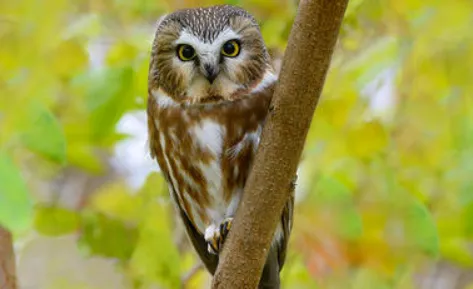Did you know that Arkansas is home to a variety of owl species? In fact, there are 16 different types of owls that can be found in the Natural State. Some of these owls are common, while others are quite rare. Learn more about the different types of owls in Arkansas in this blog post!
We’ll show you the most frequent owls in Arkansas, as well as their pictures and vital information. Only reliable sources were used to gather this data, which was then confirmed by an Ornithologist.
Most Common Owls in Arkansas
Short-eared Owls
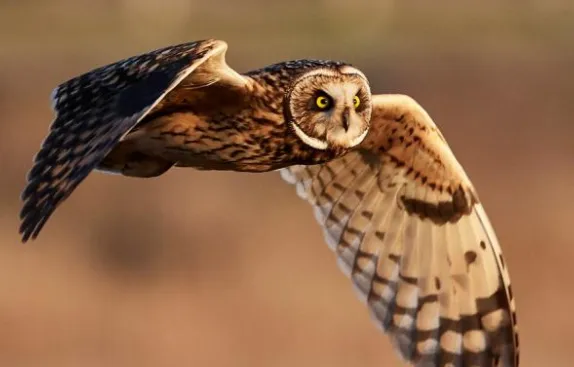
Short-eared Owls are medium-sized owls with long wings and short tails. They have prominent ear tufts, and their eyes are yellow. They are brownish or gray in color, with white spots on their wings. Male Short-eared Owls have a black mark near the base of their beak, while females do not.
Short-eared Owls hunt during the day and night. They eat small mammals, such as mice, voles, and shrews. They also eat birds, reptiles, and insects. Short-eared Owls live in open habitats, such as grasslands, marshes, and meadows. In Arkansas, they can be found in the Arkansas River Valley and in the Ozark Mountains.
Short-eared Owls are known for their ” floppy ” flight. They fly low to the ground, flapping their wings slowly and irregularly. When they are hunting, they often hover in the air before swooping down to catch their prey. Short-eared Owls are also known to ” kip ” in the air, which means they will suddenly tuck their wings in and drop a short distance before flying back up.
Short-eared Owls are monogamous and mate for life. The female builds a nest of sticks, grass, and leaves in a tree or on the ground. She lays two to six eggs in the nest. The eggs are incubated for 27 to 32 days. Both the male and female help to care for the young owls, which stay with their parents until they are about three months old.
Short-eared Owls are found in North and South America. In Arkansas, they can be found in the Arkansas River Valley and in the Ozark Mountains. If you are lucky, you may even see one of these owls while you are out hiking!
While they are not currently considered threatened or endangered, Short-eared Owls populations have declined in recent years due to habitat loss and human disturbance.

Barn Owls

The Barn Owl is a medium-sized owl with distinctive heart-shaped face. They are mostly white with some light brown markings on the wings and back. The have long, pointed wings and their legs are feathered down to the toes. These owls are silent fliers and often hunt at night. They prey on small mammals, birds, and insects.
The Barn Owl is found throughout Arkansas. They typically nest in old barns, but will also use other man-made structures. These owls are not migratory and will remain in the same area year-round.

Burrowing Owls

Burrowing Owls are small, brown owls that live in open areas such as prairies, pastures, fields, and agricultural land. They get their name from the fact that they often make their homes in burrows dug by other animals.
In Arkansas, Burrowing Owls can be found in the eastern and western parts of the state.
Burrowing Owls are unique birds in that they are one of the only owl species that hunt during the day. They eat a variety of prey, including insects, small rodents, snakes, lizards, and frogs.
One way to help Burrowing Owls is to provide a nesting habitat for them. You can do this by creating a small pile of loose soil, rocks, or wood in an open area near where they are likely to be found.
Another way to help these owls is by not disturbing their nests and providing ample food sources throughout the year.
Burrowing Owls are a special part of Arkansas’ wildlife and by taking steps to help them, we can ensure that they will be around for many years to come.

Northern Saw-Whet Owl
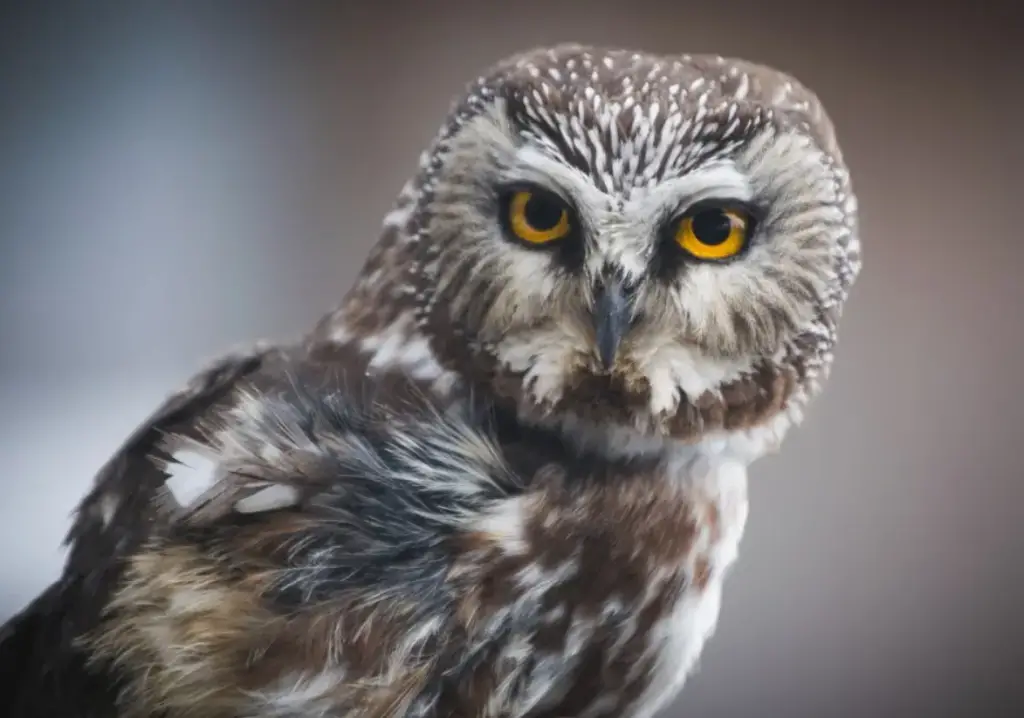
The Northern Saw-Whet Owl is a medium-sized owl with a wingspan of about 43 inches. It has a brown body, white spots on its head and chest, and orange eyes. The Northern Saw-Whet Owl is found in open woodlands and prairies across North America. This owl feeds mainly on small mammals, but will also eat birds, reptiles, and insects.
The Northern Saw-Whet Owl is a very vocal owl and can be heard calling year-round. Its call sounds like a high-pitched “seeee”. This owl nests in the holes of trees or in abandoned buildings, and lays between two and four eggs. The Northern Saw-Whet Owl is a non-migratory owl, meaning that it stays in the same area year-round.
If you’re lucky enough to see a Northern Saw-Whet Owl, you’ll be able to enjoy watching this beautiful bird hunt and care for its young. These owls are amazing predators and play an important role in keeping the populations of small mammals in check.

Snowy Owl
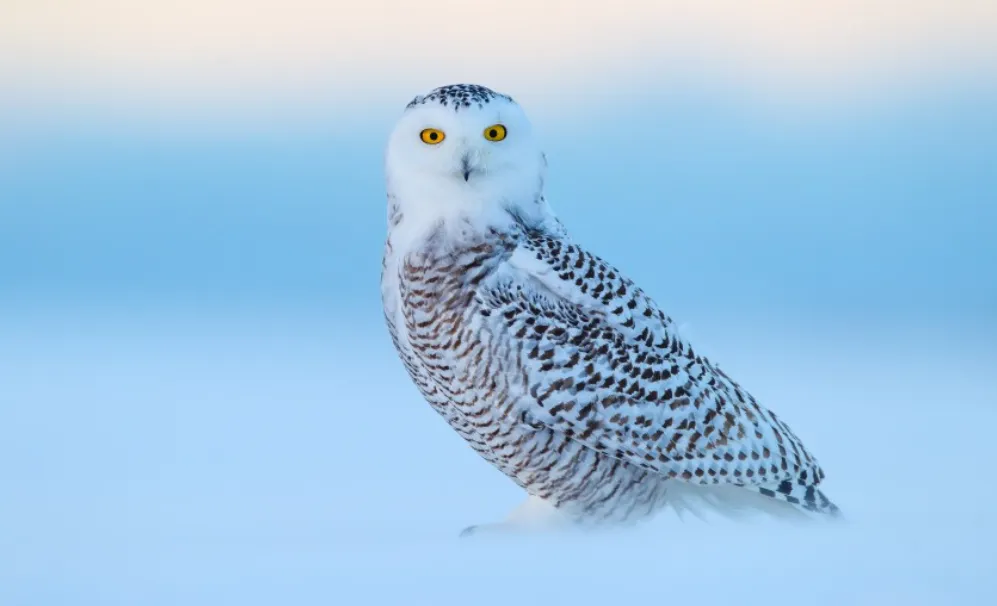
Snowy owls are one of the largest owl species in North America. They have a wingspan of up to five feet and weigh around four pounds. Snowy owls are mostly white, with some dark markings on their heads and tails.
Snowy owls are well-adapted for life in the Arctic. They have thick feathers that keep them warm in cold climates, and their feet are covered in feathers for extra insulation. Snowy owls also have special adaptations that help them hunt in the snow. Their talons are long and sharp, and their toes are spread out to help them grip the snow.
Snowy owls typically eat small mammals like lemmings, voles, and rabbits. They will also eat birds, reptiles, and insects. In the Arctic, snowy owls sometimes hunt by day instead of the night because there is 24-hour sunlight during parts of the year.
Snowy owls are found in the Arctic regions of North America, Europe, and Asia. In North America, they are most common in the northern states and provinces. In Arkansas, snowy owls are rare visitors and typically only seen during the winter months.

Long-eared Owl
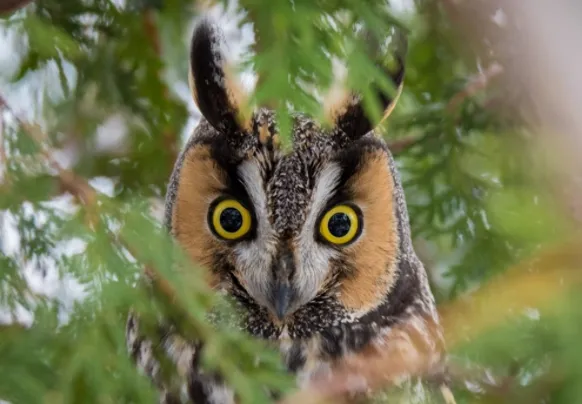
The Long-eared Owl is a medium-sized owl with long ear tufts. They have brownish upper parts and light underparts, with dark streaks on the breast and belly. Their eyes are yellow and their beak is black.
They are mostly nocturnal, but can also be seen during the day if they are disturbed. They eat small rodents, insects, and other birds.
The Long-eared Owl is found in North America, Europe, Asia, and Africa. In the United States, they are most common in the Midwest and Northeast. They can be found in a variety of habitats including forests, farmland, and parks.
They are listed as a species of least concern by the International Union for Conservation of Nature (IUCN). However, their populations have declined in some parts of Europe and North America. The main threats to Long-eared Owls are habitat loss and human disturbance.

Related post: Types of Owls in Maryland
Barred Owl
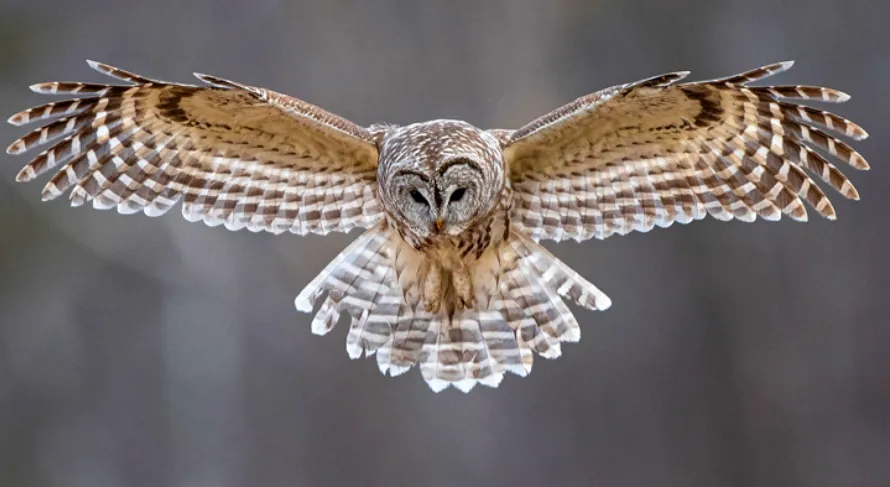
The Barred Owl is a medium-sized owl with a large, round head and no ear tufts. It has yellow eyes and a black beak. The upper parts are brown with white streaks and the underparts are pale with dark streaks. The wings are long and rounded. The tail is short and barred with white. Females and males are similar in appearance. Juveniles are browner overall with less distinct markings.
This owl is found in wooded areas across North America. In Arkansas, it is found in the Ozark and Ouachita Mountains. It prefers forests with dense trees and an abundance of prey. The Barred Owl nests in tree cavities or abandoned buildings. It hunts at night, preferring to eat small mammals, but will also take birds, reptiles, and amphibians.
The Barred Owl is a common owl in Arkansas. It is easily identified by its barred plumage and round head. This owl is nocturnal and prefers dense forests with an abundance of prey. The Barred Owl is a great bird to watch and easy to find in the state.

Long-eared Owls
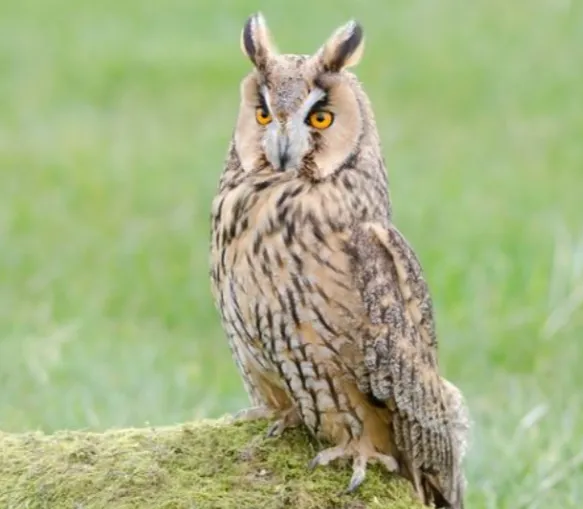
Long-eared owls are one of the most widespread owls in North America, and they can be found in a variety of habitats including forests, woodlands, and even deserts. These owls get their name from their long ear tufts, which are actually just feathers.
Long-eared owls are mostly nocturnal, but they have been known to hunt during the day if necessary. These owls primarily eat small mammals, but they will also eat birds, reptiles, and insects.
One of the most interesting things about long-eared owls is that they often nest in communal roosts. This means that a group of long-eared owls will all sleep in the same spot together.
It’s not entirely clear why these owls do this, but it could be because it helps them stay warm or because it makes it easier to keep watch for predators.
Long-eared owls are a common sight in Arkansas, and they can be found in a variety of habitats including forests, woodlands, and even deserts. These owls get their name from their long ear tufts, which are actually just feathers.
Long-eared owls are mostly nocturnal, but they have been known to hunt during the day if necessary. These owls primarily eat small mammals, but they will also eat birds, reptiles, and insects.

Eastern Screech Owl
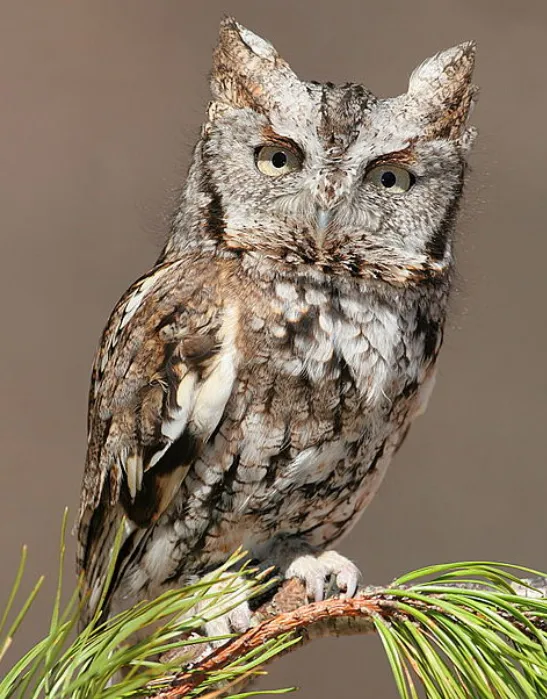
The Eastern Screech Owl is a small owl. It has a large head and big eyes. This owl is gray or brown with streaks on its belly. It has ear tufts. The Eastern Screech Owl can be found in woods, farms, and cities. It eats mice, insects, and birds.
This owl nests in tree cavities. It is active at night. The Eastern Screech Owl can be found in the eastern United States.
The Eastern Screech Owl is a small owl with a large head and big eyes. This owl is gray or brown with streaks on its belly and ear tufts. The Eastern Screech Owl can be found in woods, farms, and cities. It eats mice, insects, and birds.
This owl nests in tree cavities and is active at night. The Eastern Screech Owl can be found in the eastern United States. These owls are nocturnal predators that use their excellent hearing and vision to find prey in the dark.
They are typically found in deciduous forests, but they can also be spotted near agricultural land or even in suburban neighborhoods. Eastern screech owls prefer to nest in natural cavities such as hollow trees, but they will use old buildings, birdhouses, and other structures if needed.
These owls eat mostly small mammals like mice and voles, but they’ll also take insects, amphibians, and other small prey. They’re known to scavenge carrion when the opportunity arises.
Although they are usually quite solitary, eastern screech owls will sometimes form loose breeding pairs during the mating season. In winter, these birds may congregate in communal roosts of up to several dozen owls.

Great Horned Owl
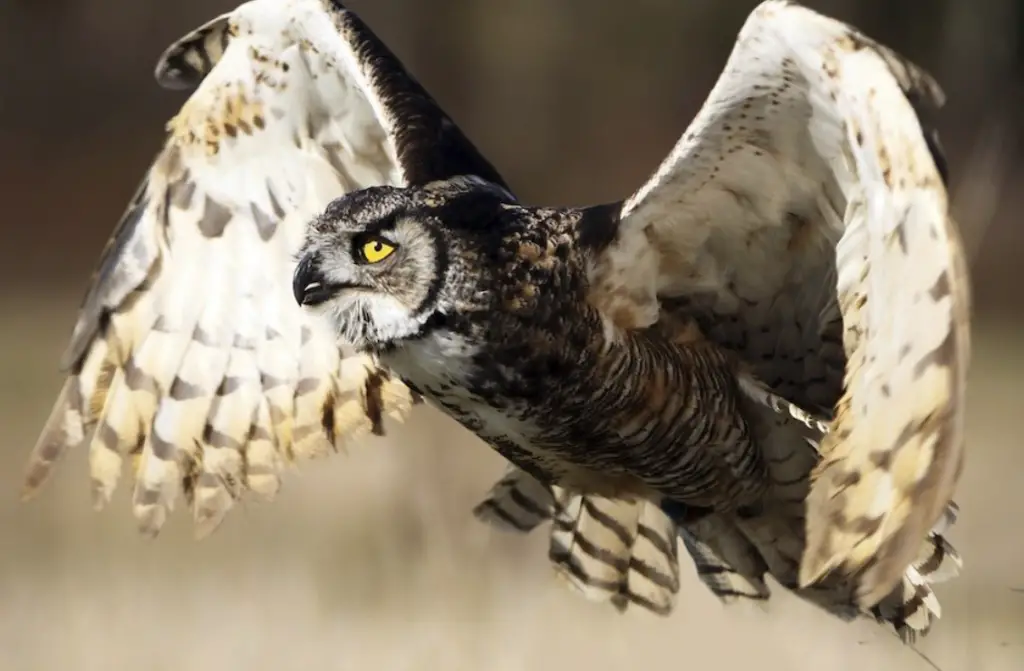
Great Horned Owls are one of the most widespread owls in North America. They can be found in a variety of habitats, including woodlands, forests, and even urban areas.
These adaptable birds are relatively large, with males averaging about two pounds and females averaging about three pounds. Great Horned Owls have a wingspan of four to five feet.
Great Horned Owls are easily recognizable due to their large size and distinct plumage. Their heads are covered in dark brown or black feathers, and they have white patches of feathers on their throats.
The rest of their bodies are mostly tan or light brown, with some darker streaks. Great Horned Owls have large, powerful talons that they use to hunt their prey.
These owls are primarily nocturnal, although they may be active during the day if there is enough light. Great Horned Owls typically hunt alone, but they will sometimes form pairs or small groups while hunting.
Their diet consists mostly of small mammals, such as rabbits, hares, and rodents, but they will also eat birds, lizards, and insects.
Great Horned Owls are considered to be very aggressive predators. They have been known to kill animals much larger than themselves, including deer and coyotes. They are also one of the few owl species that hunt during the day.
Great Horned Owls are a valuable resource for farmers and ranchers, as they help to keep the population of rodents under control.


An avid ornithologist, zoologist and biologist with an unwavering passion for birds and wild animals.
Dr. Wilson’s journey in ornithology began in childhood and led him to obtain a Ph.D. in Ornithology from the prestigious Avian Research Institute. He has worked closely with renowned experts in the field and conducted extensive research and field studies globally.

